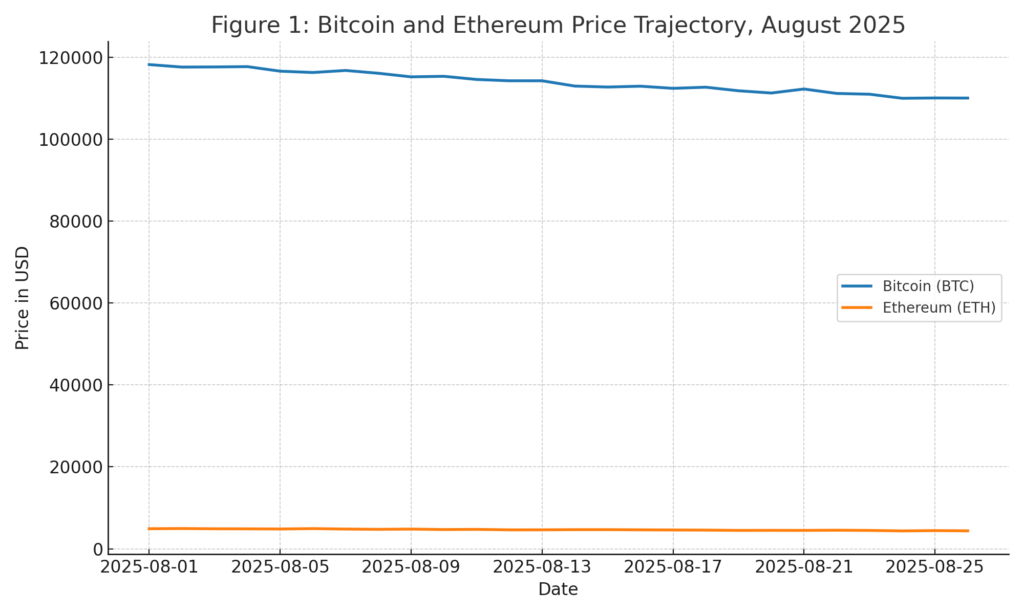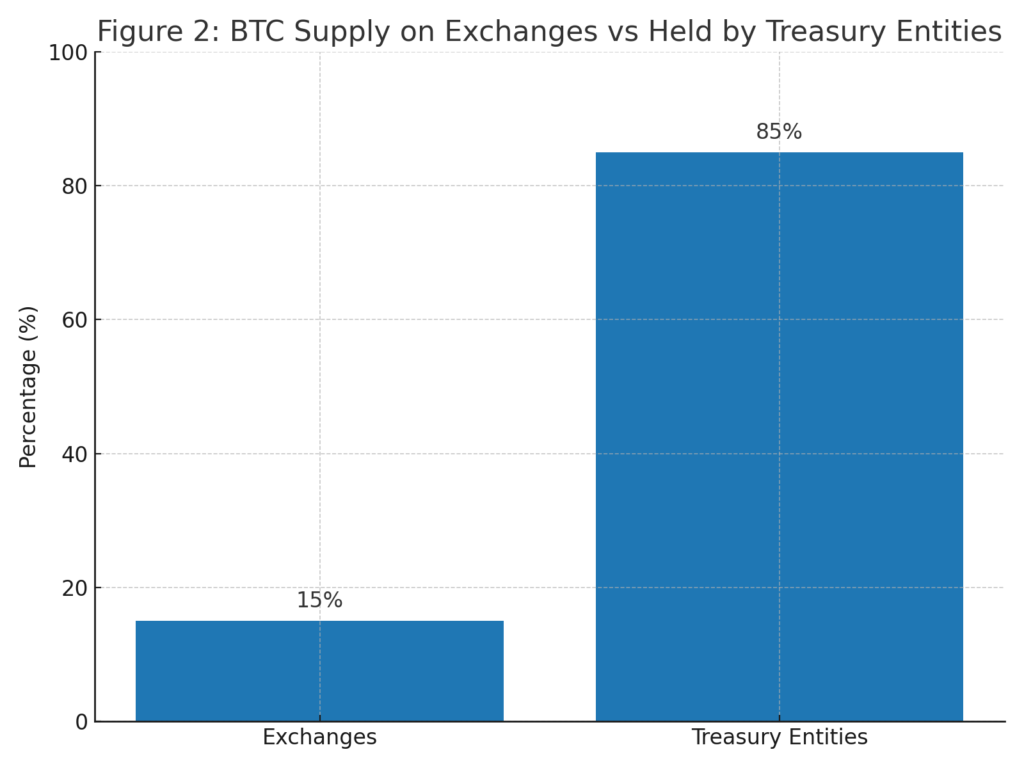
Main Points :
- Bitcoin’s short-lived rebound collapsed, with price plunging back below $110,000 amid failed recovery attempts.
- Ethereum plunged nearly 8%, unable to sustain early gains, despite reaching fresh highs days prior.
- Massive liquidations of leveraged long positions (~$700M+) have added to market stress.
- A single whale unloading 24,000 BTC triggered a flash crash, shaking confidence.
- Historically weak seasonality in September raises further caution.
- Yet, institutional interest—through ETFs, treasury accumulation, and bullish proponents—remains strong.
- Ethereum appeals to investors via programmable smart‑contract utility; Ethereum dominance and volume are rising.
- Emerging layer‑2 and utility tokens such as Remittix and Layer Brett are drawing attention as practical alternatives.
- Crypto treasury companies accumulating BTC could create a supply crunch, underpinning long‑term bullish scenarios.
- Analysts project possible BTC up to $200K+ by 2026, while Ethereum could rebound via institutional flows and network utility.
1. Bitcoin’s Collapse: Flash Crash After Failed Rebound
Despite a promising bounce, Bitcoin’s rally quickly fizzled on August 25. The price tumbled back below the $110,000 mark after initial attempts to sustain above $117,000 failed. During U.S. trading, BTC was rejected at around $113,000—promptly reversing course to trade in the $110,000 range, near its Thursday lows.
A significant factor was a “flash crash” triggered by a whale dumping 24,000 BTC, which shuttered the rebound and triggered a cascade of selling.
2. Ethereum Loses Momentum After Brief Highs
Ether briefly surged to a record high—nearly $4,954—but the rally was short-lived. Within 24 hours, ETH declined around 8%, trading below $4,400. This sharp pullback reflects broader market weakness, as altcoins followed suit: Solana, Cardano, Dogecoin, Chainlink all dropped between 6–8%.
3. Massive Liquidations Amplify Downturn
CoinGlass data revealed that August 25’s price swings triggered approximately $700 million in liquidations of leveraged crypto positions, surpassing the prior day’s totals. Among these, ~$627 million were long positions—bets that prices would rise. Investor sentiment grew more fragile.
4. Seasonal Headwinds Ahead
August’s tumble dashed hopes of a quick recovery. Historical trends also offer warnings: September typically brings weaker returns for BTC and ETH—averaging losses of 3.8% and 6.4%, respectively.
5. Institutional Thrust and Supply Squeeze Potential
On the brighter side, institutional involvement is intensifying. Crypto treasury firms now hold nearly one million Bitcoins collectively, potentially creating a supply shortage. Available BTC on exchanges has dropped below 15%, levels unseen since 2018.
Ethereum, too, is garnering demand via ETF inflows, corporate accumulation, and its programmable infrastructure—boosting its market cap toward $600 billion.
6. Optimistic Forecasts for BTC and ETH
Analysts project continued upside: Bernstein estimates that Bitcoin’s bull run may extend into 2027, with a near‑term target of up to $200,000, driven by institutional demand, favorable regulation (e.g. GENIUS Act), and strategic Treasury reserves. Tom Lee and others see Ethereum hitting $10,000 by the end of 2025 as ETF flows and corporate holds fuel its growth.
Investopedia notes over $14.4 billion has flowed into Bitcoin ETFs so far in 2025, while Ethereum remains undervalued yet primed for resurgence via staking, DeFi, and institutional interest.
7. Altcoins with Utility Take the Stage
Beyond BTC and ETH, utility-focused tokens are emerging. Remittix (RTX) recently surged over 500% in 2025, offering cross‑border payments, fiat gateways, low gas, and global wallet functionality, already raising over $20 million and listed on BitMart.
Another contender, Layer Brett (LBRETT), employs Layer‑2 tech, high staking APYs, and DAO governance, blending meme‑coin community appeal with real utility—and forecasts as much as 12,000% upside.

8. Ethereum Gaining Ground on Metrics
On‑chain analysis shows that BTC dominance has declined from 64.5% in early July to 59.7% by mid‑August, with Ethereum gaining share. Transaction count rose 26% month‑over‑month, and median fees dropped 13%—positive signs for Ethereum’s network strength.
Additionally, ETH trading volumes in July hit YTD highs, with sessions where ETH turnover exceeded BTC on major exchanges.
Conclusion

The abrupt breakdown of the crypto rebound—exemplified by Bitcoin’s dive back under $110K and Ethereum’s 8% drop—has rattled markets and dispelled short‑term optimism. Flash crashes, liquidations, and historical seasonal weakness all caution traders. Yet, the long‑term fundamental outlook remains compelling. Institutional demand, ETF inflows, strategic reserves, and the rise of application‑driven tokens like Remittix and Layer Brett offer meaningful catalysts. For practitioners and crypto‑hunters seeking the next revenue stream or practical blockchain utility, the opportunities may lie as much in emerging protocols and altcoin utility models as in the old standbys of BTC and ETH. The path ahead is volatile—but far from devoid of promise.

